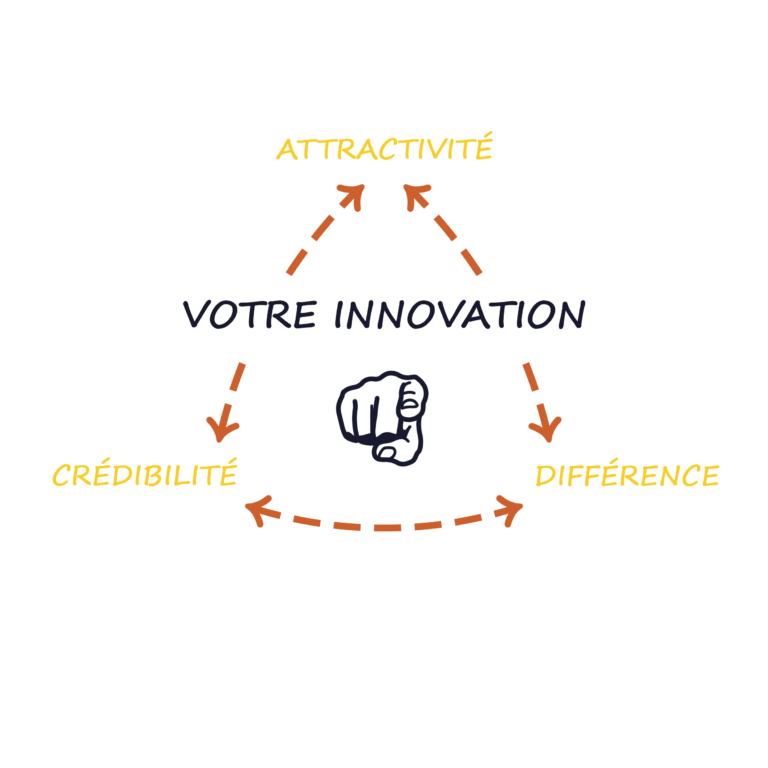The key stages of a successful innovation process

Author: Syrine Cassagne
Webmarketing manager - Ixiade
Creation & launch of an innovation project
Reading time: 6 min
Step 1 : Think your concept with user-centred view
The reasons for innovation and the objectives pursued can be varied: diversification of activities, expansion of the product or service portfolio, search for growth levers, response to significant trends or new expectations expressed by the market, etc..., the reasons are not lacking. Howeve, it is not always easy to find the right idea for an innovative solution, that is both diffentiating and designed for it users. To this end, the ideation and concretisation phases are essential for starting an innovation project. The key here is to approach these initial phases with a view centred on the future users of the innovation.
This first stage of ideation aims to generate a maximum number of possible solutions through creativity methodologies. Although " brainstorming " is the best known and the most used, it has many limits: creative detours are the most appropriate methods for generating differentiating ideas. These creativity detours are generally based on the principles of idea association (to force the meeting of stimuli from different envrionments) and problem solving, while at the same time unlocking mental inertia (the fact of being locked into a vocabulary and a system a thought specific to a domain, technical for example). Known methods include: the TRIZ method , which stimulates creativity with tools for unlocking mental inertia, the CPS method (Creative Problem Solving), which uses phases of divergence and then convergence to respond to creative challenges, or also the C-K theory, which puts the concept and knowledege in interaction so that they mutually enrich each other. These methods, in additions to generating a large number of potential ideas, make it possible to identify the most meaningful ones for the users. At this stage, tools such as illustrated idea books (associating sketches with the ideas generated) are effective in order to sort out and anticipated the next stages of formalisation. As for the development of the concept and its materialisation, the ideal is to mobilise design expertise focused on UX to design, model and prototype your futurer innovative product or service.
Step 2 : Give your innovation a unique place
In parallel to the definition of the concept and in line with the innovation strategy, it is essential to formulate an attractive positioning for your innovative product or service. If it is the role of an innovation to offer differentiating and credible elements to encourage its adoption, positioning is not a coincidence. It is a question of anticipating how you want your innovation to be perceived by the market. This stage deserves real reflection and collaborative work so that positioning can then be the driving force behind appropriate communication and an effective marketing strategy.
In marketing,the term "positioning" is widely used, but is rather understood as a means og guiding the " marketing mix " and identifying the place of one's product or service in its competitive. In the context of an innovation process, the definition of positioning underlies several aspects and depends on serveral prior steps. As a first step, and in addition to defining your offer concept, you will need to define the profiles of your target (your " personae ") in particular through " personae sheets ". These sheets, which can take the form of identity cards of your typical targets, allow you to understand the aspirations, needs and concerns of your targets. It is the match between the characteristics of your targets, which will then guide you in creating a unique value proposition (UVP). And it is the determination of the attractiveness, difference and credibility factors of your innovation (which constitute the golden triangle of positioning) that will then allow you to formulate a clear and unique positioning.

Step 3: Showcase your innovation and communicate in an impactful way
Because an innovation project is rarely built on its own, one of the key stages of a successful approach is also to be able to communicate about its innovation even before it is developed and launched on the market. Whether to convince partners, investors or potential prospects, the communication of the innovation project must reflect the value proposition and its uniqueness in an understandable way. One of the methods to be used here is the use scenario, which allows you to depict the use of your innovative solution and to show how the target user will interact with it. To build a good usage scenario, you need to define the user problem to be solved and the key moments that will guide the story. Knowing how to tell the story of the use your innovation is not easy and the main challenge is to create an imaginary world that is sufficiently realistic and strong for your targets to project themselves into the use of your conceptTo this end, there are many methods and tricks: mobilising detailed contextual elements, defining the temporalities of the scenario, creating a storytelling that arouses mental imagery, marking the emotions of the protagonists, etc... On the practical side, it is recommended to mobilise expertise in storytelling, graphics et design, whether to identify the style of storytelling and illustration best suited to your project or for the technical production of one or more communication media. The video format, which is very popular today, is often the favoured format because it offers freats possibilities for bringing an innovation to life, whatever its degree of maturity, notably thanks to the incrustation of 3D modelling, trickery and cinomatographic special effects.
